20 Best Superfoods To Eat for Weight Loss
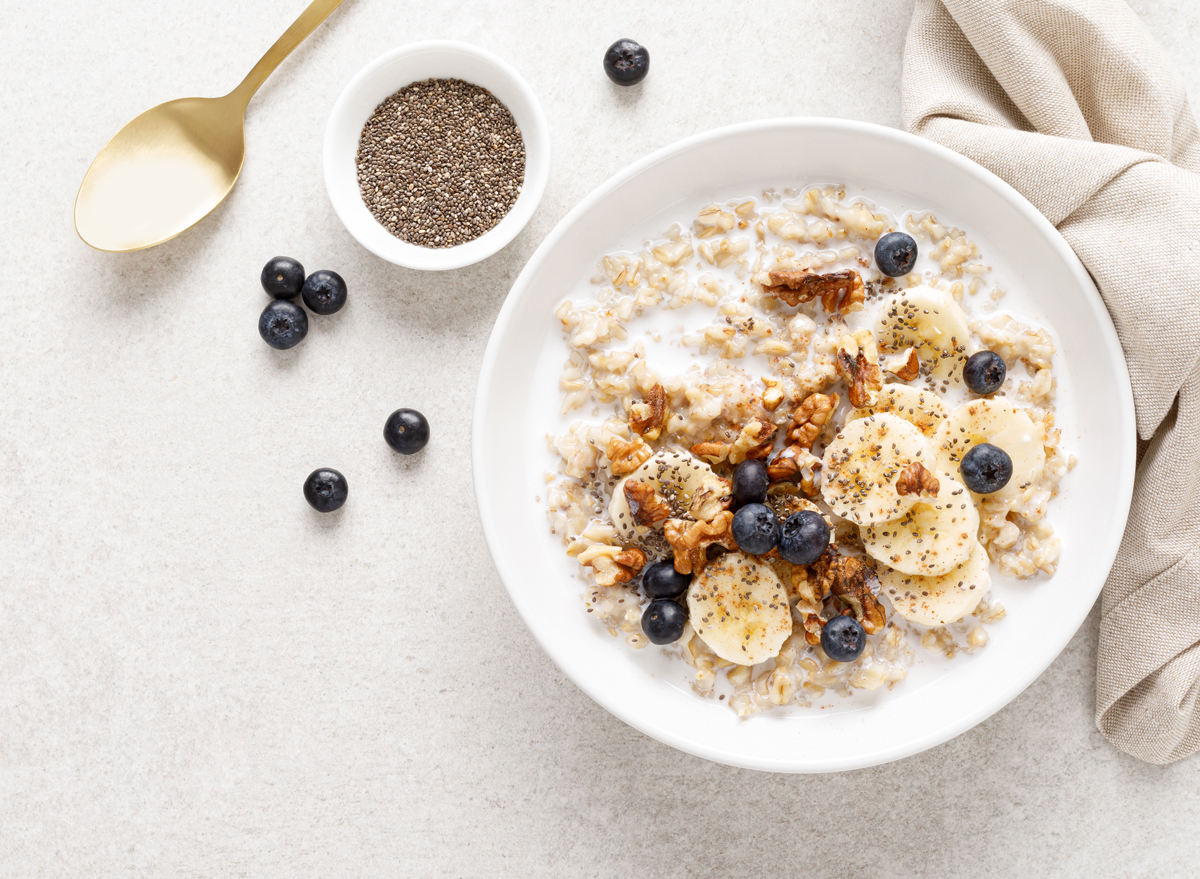
Many of us struggle with our weight. The most recent Centers for Disease Control and Prevention (CDC) statistics report that a staggering 41.9% of U.S. adults are obese and that number is only climbing. Weight management is more than just diet—it’s an interesting interplay between eating patterns, exercise, stress, chronic conditions, age, and even sleep habits and environment.
Superfoods are loosely understood to mean nutrient-dense, disease-fighting foods (often plant-based), which confer extra benefits to the body. Nutrient density is the amount of nutrients that are provided per calorie consumed. Oftentimes, foods marketed as superfoods are excellent sources of vitamins and minerals. Superfoods do not have a formal, standardized definition by health professionals or government agencies but are regarded to be foods with powers for health beyond the plate (or label).
Although incorporating superfoods for weight loss into your eating routine may help fine-tune your diet, these foods should be eaten in an intentional balance with the rest of your food choices and should be eaten as “whole foods” rather than processed versions. Eating foods in excess may mean indulging in two avocados in one sitting (which would contribute 644 calories alone). Consuming overly processed foods can mean having oats via an oat flour blend in a pastry or drinking a sweetened cranberry cocktail. This is not achieving the same results as enjoying one serving of these three foods (avocado, oats, and cranberries) in their original form.
Evidence points to a dietary pattern more abundant in nutrient-dense foods and lower in ultra-processed foods as being conducive to a healthier weight.
Try adding one serving (shown in parentheses) of these superfoods for weight loss weekly to support your goals! To learn more about superfoods, check out Your Only Goal This Year Should Be To Eat More Superfoods, Dietitian Says.
Avocados (1/3 medium fruit)
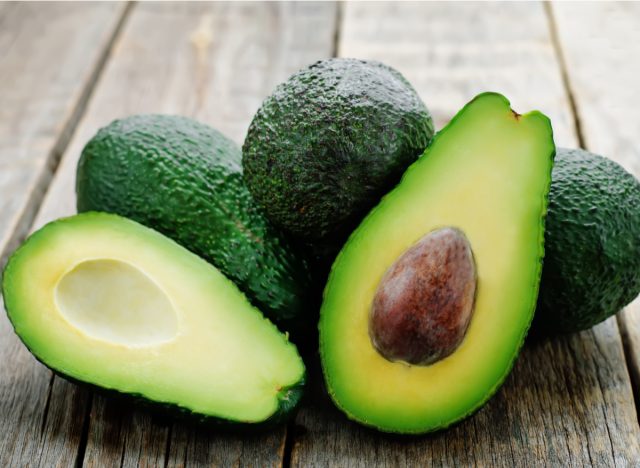
Avocados are everywhere from salsas to toasts. This healthy fat adds creaminess to anything it touches. A 2020 assessment in the journal Nutrients found that women who regularly consumed whole fruits and vegetables, including avocados, versus those who did not, experienced greater weight loss over a four-year period.
Blueberries (1 cup)
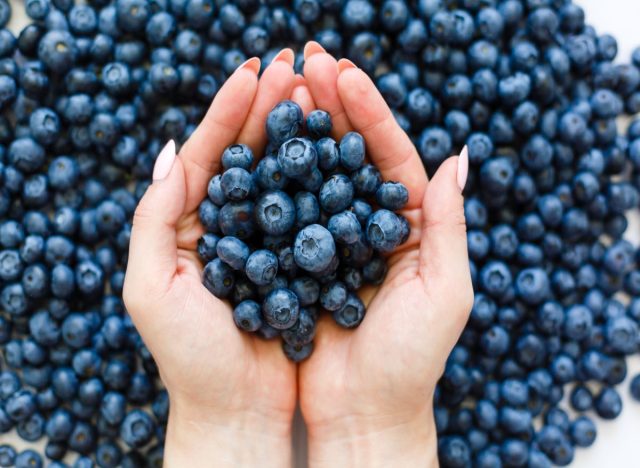
Blueberries can be the VIP of yogurts and smoothies. Use the blueberry’s natural sweetness in place of added syrups in these breakfast options to support weight control.
Lentils (1/4 cup dry)
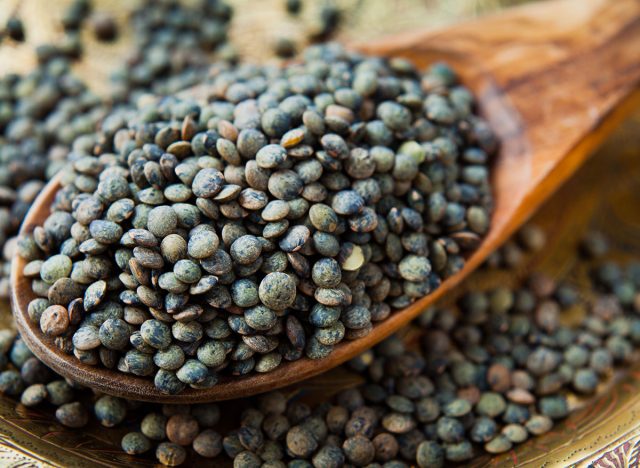
A 2016 systematic review and meta-analysis of randomized controlled trials in the American Journal of Clinical Nutrition found that there was a modest weight loss effect when pulses, like lentils, are in the diet.
Mushrooms (1 cup)
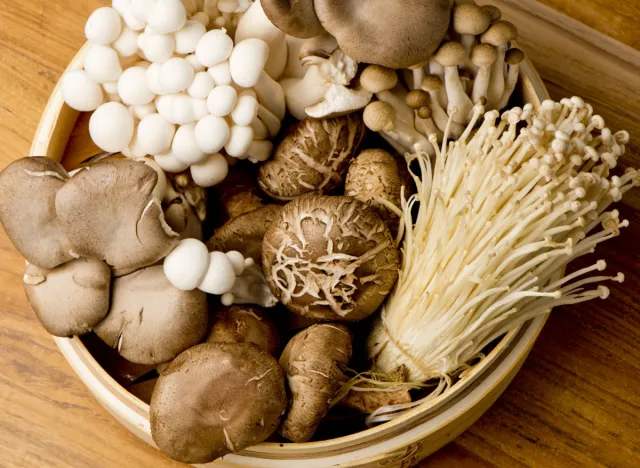
When used in place of beef, mushrooms can deliver a comparable dose of savory but at a fraction of the calories per ounce. Tricks to lower calorie intake without sacrificing flavor are the foundation of effective weight loss.
Pistachios (1/4 cup)
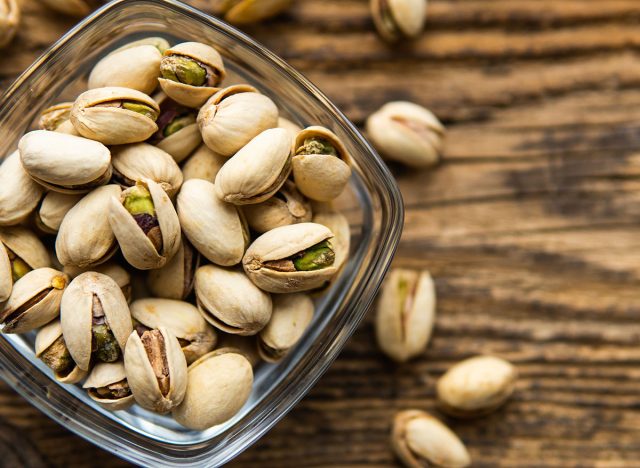
Not just for snacking any more, pulverized pistachios make a yummy coating for main dishes. Pistachios have a more desirable nutritional makeup than many other nuts, coming in at 160 calories, four grams of total fat, and just 1.5 grams of saturated fat per serving. This may be beneficial for effective weight loss.
Chia seeds (2 tablespoons)
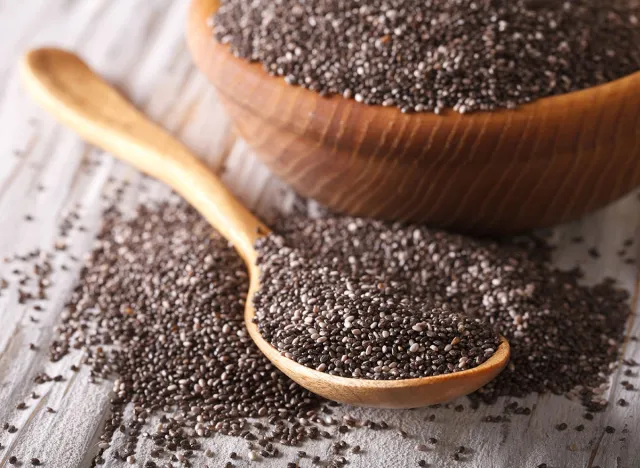
Trade out regular sweetened puddings for a chia pudding. This increases fiber intake towards keeping you full and offsetting overeating.
Cranberries (1 cup fresh/frozen or ½ cup dried)

Incorporate cranberries into your next stuffed squash or stuffed bell pepper recipe. Select unsweetened dried cranberries instead of sweetened dried cranberries to save a remarkable 210 empty calories (read: calories that don’t help weight loss) per serving.
Pomegranates (1/2 cup “arils” or seeds)
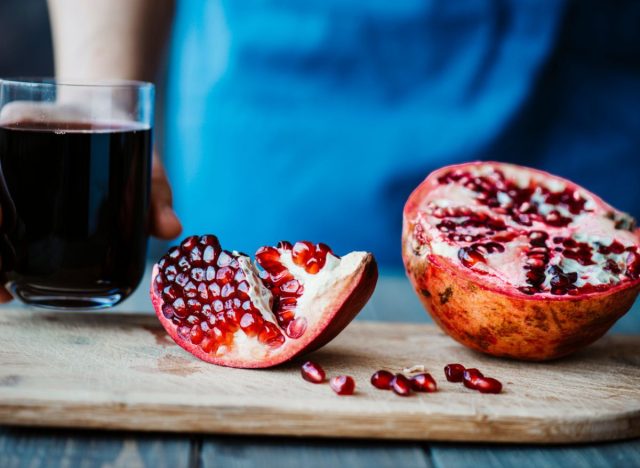
This tart fruit can be mixed into your next guacamole. Research consistently hints at adequate fruit and vegetable intake as being associated with lower body weight.
Garlic (1 clove)
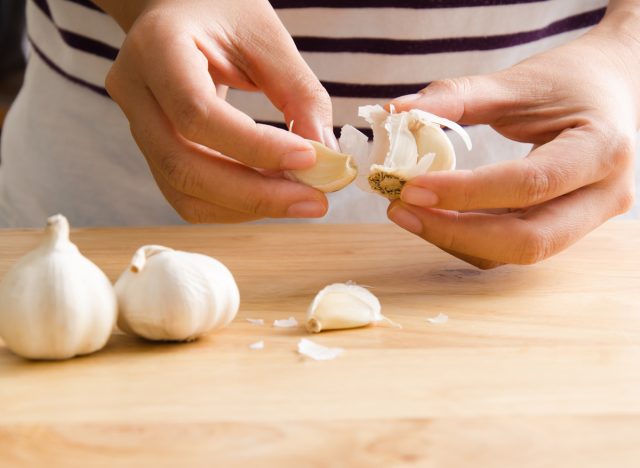
America’s favorite cooking companion. Try it freshly minced rather than powdered or jarred. Flavoring with herbs, spices, or vegetables like garlic, rather than other high-calorie additives, could save you big calories when done regularly.
Kale (2 cups fresh)
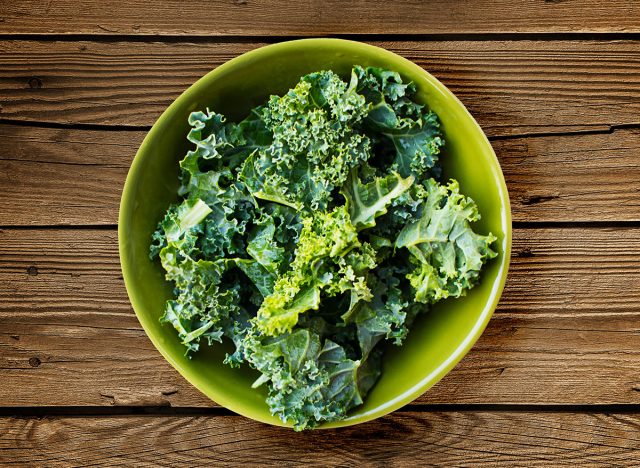
A 2014 cross-sectional study in the Journal of the Academy of Nutrition and Dietetics found that consumers of nutrient-dense vegetables (classified as non-starchy dark leafy greens and deep orange/yellow vegetables which were not juices nor fried), rather than non-consumers, had lower visceral fat.
Oats (½ cup dry)
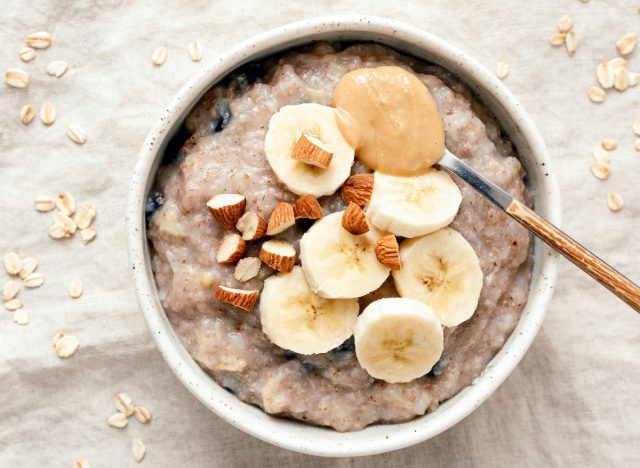
Enjoy as oatmeal or homemade granola. Oats contain an impressive four grams of fiber per serving, with half of those grams as soluble fiber to improve satiety to further weight loss.
Açaí (1 cup)
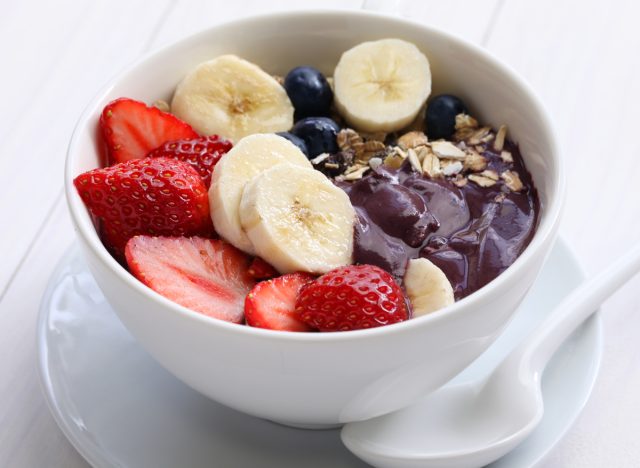
Find açaí as a puree in your store’s freezer section. This fruit is being studied for its possible influence on achieving a healthy body weight.
Broccoli (1 cup)
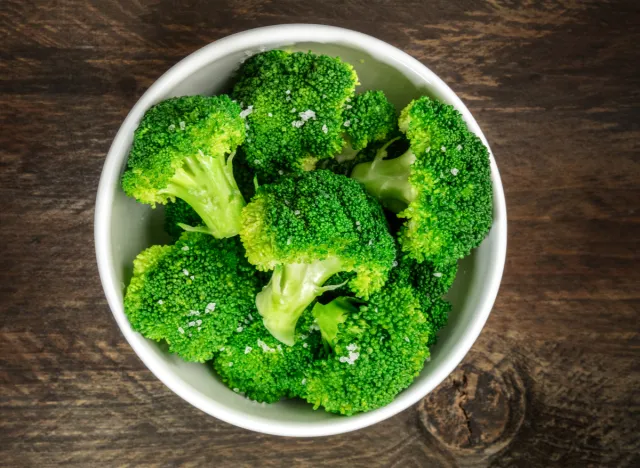
Keep a bag of frozen broccoli in your freezer for an easy addition to stir-fries and pasta dinners. Broccoli adds bulk to a meal to appear like more food and possibly slow down our eating pace.
Quinoa (1/4 cup dry)
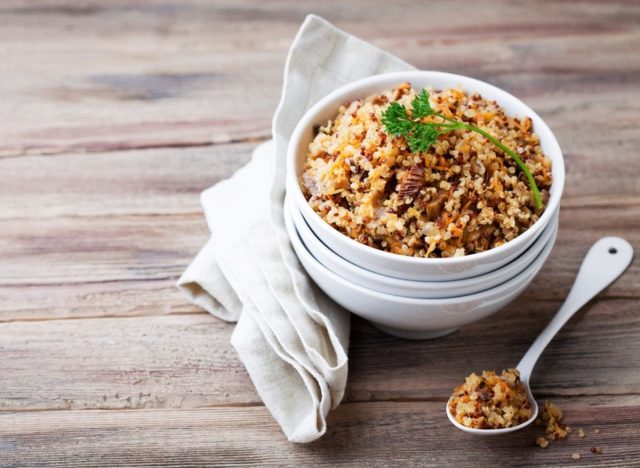
This higher protein grain is the perfect bottom layer of a power bowl. Adequate protein intake increases feelings of fullness toward improved weight control.
Cocoa or cacao (1 tablespoon)
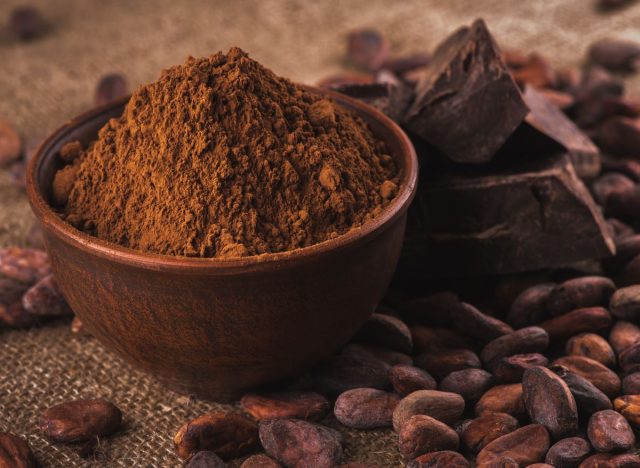
Surprise! Cocoa or cacao powder is one of the best superfoods for weight loss. Cocoa powder is made from roasted cacao seeds. A little bit of this bitter seed goes a long way! Turn to cocoa-dusted desserts rather than chocolate-smothered desserts to aid your weight loss journey.
Cauliflower (1 cup)
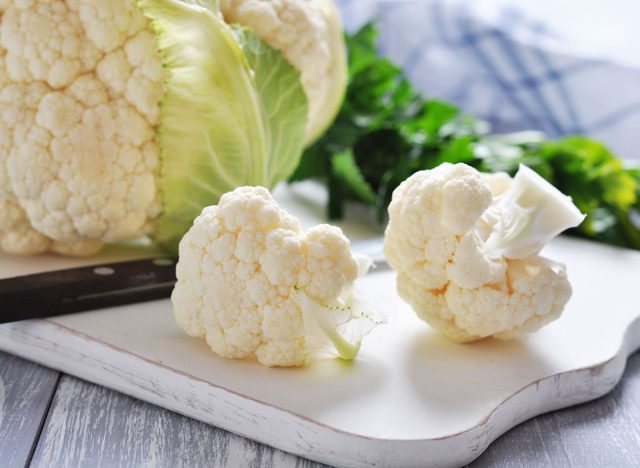
Cauliflower is more versatile than we once thought! Find it mashed, minced, pureed, or disguised as buffalo wings. When used in place of traditional rice, cauliflower “rice” saves you about 135 calories per serving.
Salmon (3 ounces)
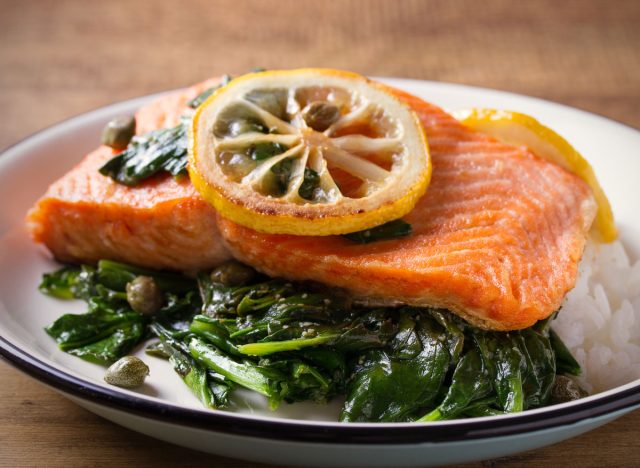
Try to avoid salmon prepared with extra salt and sugar, opting instead for plain salmon you season yourself with herbs or spices. Selecting lean proteins like salmon, rather than high-fat proteins, is a habit often seen in adults managing their weight well.
Spinach (2 cups fresh)
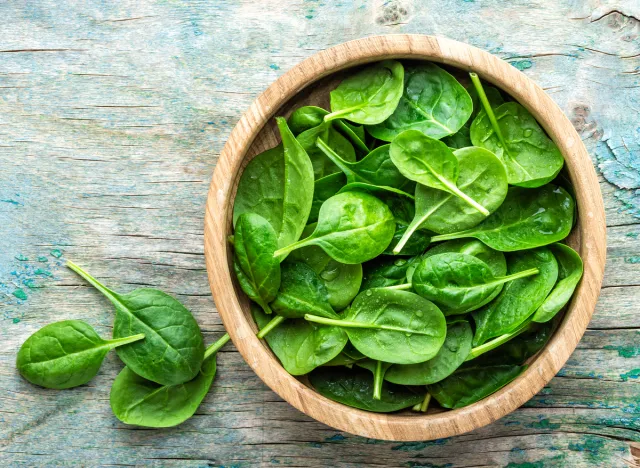
Spinach cooks down to very little volume. Add it to scrambled eggs or scrambled tofu. Consumption of whole vegetables like spinach is linked to a lower incidence of obesity.
Walnuts (1/4 cup)
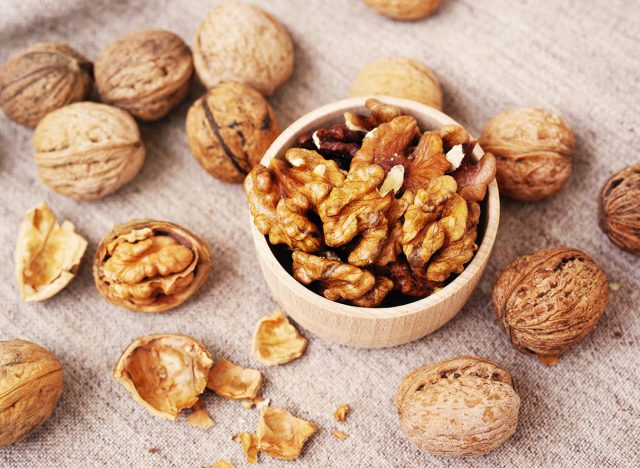
One of the few plant-based sources of omega-3 polyunsaturated fatty acids. Omega-3s may improve body composition and help maintain weight loss.
Garbanzo beans (1/2 cup canned)
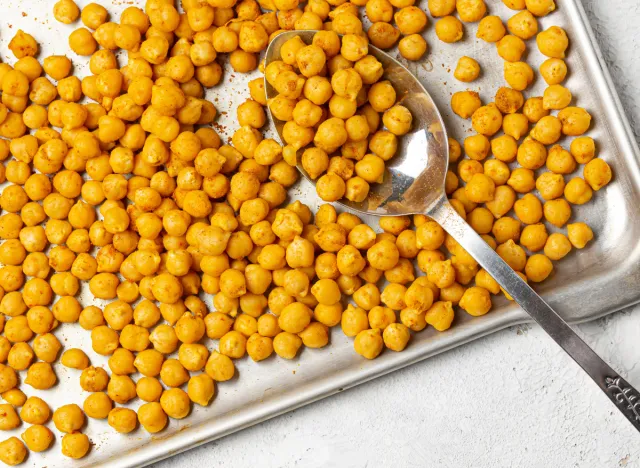
Even the liquid of garbanzo beans (chickpeas), “aquafaba”, can be used for baking. Research further suggests that pulses, like garbanzo beans, could increase satiety and lead to better weight management, making them one of the best superfoods for weight loss.









